 A new K9 Water Sports facility opened near me (Paws Aquatic Water Sports and Rehab) that offers self and assisted swimming for therapy and fitness. They also have a regulation deck for dock diving with a pool 41ft long. WOW! I am so excited to have something so close to home, that my dogs LOVE. We used to swim as much as we could but time and distance kept us from doing it with any regularity.
To say that my "big" dogs (Stan, Force, Riley and Drama) love the water would be an understatement.
Swimming can be a GREAT addition to any K9 Conditioning plan as long as the dog enjoys swimming and they swim efficiently using all four limbs. "Continuous" swimming is where the cardio benefits are - 5 min of continuous swimming is said to be equal to a 5 mile run. If the dog is retrieving - out and back, start and stop - it is not the same type of workout. Not to say that it isn't beneficial but it depends on your goal. It is also important that your dog turns in both directions as well as drives out straight. You want all four feet to assist in turns. Watch that your dog doesn't use just their front limbs. :) What is nice about this wonderful pool is that is it 41' long and 21' wide so there is a lot of room for most dogs to get big wide turns as well as long straight swims. So how does swimming fit into my fitness plans??
I love trying new things and of course enjoy watching my dogs do something they love. Stanley My oldest who is almost 14 yrs old, truly loves "water". He is a very natural swimmer and genuinely is so happy when in the pool. He is my slow methodical swimmer that swims for the joy of swimming. He does not need toys and will tread water. For his age he is doing pretty good and I want him to get to have the joy of swimming as much as he can! (no dock diving) Force Crazy, 11.5 yrs old Force, loves to swim but it is all about the toys and not very calm. He is an erratic swimmer until the toy is in his mouth and then he smooths out on the return trip to the ramp. If he carries a toy into the water, he is much smoother and I find that when I am in the water with him, I can get him to calm down. Force's general comfort in daily life is better when on a regular swim schedule. (no dock diving) Riley At 9.5 years old Riley loves to swim, loves the toys, and is a very smooth swimmer who can tread water. Riley loves everything he does and he does it with a smile on his face. He has no issues jumping off the dock for dock diving but has a bit of a confidence issue doing it at speed. He runs all out to the end of the dock and stops, then "plops" in the water. We will keep working on it, just for fun. (no swimming for Riley for a couple week as he is still healing form abdominal surgery - and definitely no dock diving for a while) Drama Mr Motor boat (15mo old) - Drama has turned into a little fish who loves the water and more than anything loves to save the chickens (rubber chickens). He LOVES to jump off the dock and after just a couple weeks, consistently jumps about 13' or so. He is a strong swimmer and clearly enjoys it. It is really fun watching how excited he is to jump off the dock. Little dogs: Kaos (5yrs old) and Jack (17mo old) They can swim, but so far they both would really rather stay on land. 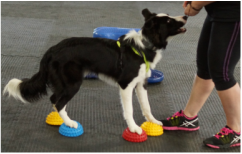 2015 has been a busy busy year. Due to my other writing engagements - 12 articles for Clean Run Magazine (so if you missed those, go back and check them out) and the conditioning for jumping skills chapter in Linda Mechlenburg's new book (published by Clean Run - should be in print soon) I have not written a blog post in quite some time. I have tried to keep things updated by sharing videos and thoughts on Facebook but it is time to get back to my blog, sharing deeper thoughts about this wonderful job "I get to do" every day. I don't know many folks that get to do what they are passionate about. I feel very lucky. What else have I been doing..... Helping to create an awesome program FitPAWS took a leap of faith, gathered dog trainers, veterinarians and physical physical therapists (human and dog) and embarked on a journey to create the FitPAWS Master Trainer Program - now merged with the University of Tennessee - CCFT program. Completing and passing both programs will earn you a certification backed by a university - how AWESOME is that. As one of the course instructors, I have taught at five MT programs and will be heading to the UK in December with FitPAWS to share the master trainer program to those abroad. Super excited for this opportunity ~ one step closer to K9Fitness WORLD DOMINATION. When you have goals - go big right??? Raising a puppy - DRAMA Drama has certainly grown up over this year and many of you have watched him grow via Facebook . He is 33 lbs, almost 14 mo old and his growth plates are closed. So officially he is ready to start whatever training I have planned. You all know me to be super conservative, so you know that I don't take that as a license to start repetitive training just yet. Drama and I will ease into whatever we decide to do. I have plans, stay tuned to find out what we will be doing. Travel This year Drama and I have traveled to Colorado 7x, Connecticut, Washington 2x, California, Maryland, Virginia, New York, Oklahoma, and will finish off the year with Montana, another trip to California and the UK. It is too bad they don't give frequent flyer miles to dogs. Drama is a great traveler and we have had minimal issues. Our last trip was a bit scary for a few minutes but it all got sorted out and I love having him with me. It has been so great meeting my online students in person and so many folks that are interested in how to improve their relationship with their dogs while mentally and physically challenging them to use their body more efficiently. Continuing education Working along side the members of the FitPAWS MT Course Instructor team has been an awesome learning experience. The collective knowledge in this group offers a wide variety of experience that the whole team learns from. I have had some great opportunities to shadow and learn from my local veterinarians as well as Drs Sherman and Deb Canapp at VOSM in MD (headed back there in 2016), Dr. Wendy Baltzer, DVM, PhD, DACVS, DACVSMR, CCRP at OSU and Sarah Ostrin, CCRP - OSU Rehab Dept. I finally met Debbie Gross of Wizard of Paws in person when she came to speak at the FitPAWS Master Trainer Program in April. After teaching with her online it was great to finally meet her in person. Online Classes I put some new classes up online at daisypeel.com - Injury Prevention for Shoulder and Psoas Injury, Walk this Way - DogTread treadmill strength activities and K9XTraining. In 2016 stay tuned for more new classes to help your dog understand how to move their body faster, with more precision and with less chance of injury. And now for some thoughts - When looking at designing a fitness plan for a client's dog, I always look at a gentle progression with milestones and challenges. I continually assess the dog so that the level of difficulty can be increased or decreased based solely on the dog's ability to maintain the proper posture and the muscle engagement intended for each activity. It is important to always be watching the dogs posture and foot placement as well as your reward position when training exercises. The handlers reward and/or hand position as well as their body posture can greatly affect the dog's ability to maintain proper position and weight distribution. Some things can cause a temporary decline in performance:
Constant reassessment of your dog's abilities by you or by your K9 Fitness Coach is essential. If your dog has tight or sore muscles, participating in some active range of motion exercise and/or flexibility training can keep injury at bay. Catching a soft tissue injury early on with a referral to a qualified veterinarian, can make a huge difference in the recovery time and eventual return to activity. Having your K9Fitness coach assess your dog regularly, can truly help handlers work through their fitness plan "mindfully". Remember that just because your dog could do it yesterday does not mean they can do it today. A good fitness plan will have progressive exercises that start at the foundation level and progress forward so that your dog builds the strength and skills needed to perform exercise without compensations or possible injury. Always, make sure that you are starting with the base layer or foundation level of an exercise if your dog has never performed the chosen exercise before or if your dog is new to strength activities. That said, some dogs that have been involved in a strength training program need to be re-evaluated for form and function to make sure that they are performing the exercises while engaging the proper muscles groups. Some times this has to do with reward/hand position or the handlers posture as mentioned above. Again, having another set of eyes on to help with what you can't see is so important and a K9 Fitness coach has many tools in their tool box to achieve your goals. For example, if you aspire to have your dog stand on four FitPAWS paw pods, which increases limb awareness, core strength and balance, you must first build value for putting front feet on the pods, train an independent back up, then teach your dog to back up to the pods, then work on all four feet. Learning to first balance with front feet elevated, then gaining the rear end awareness to back up and elevate rear feet is the foundation training for learning to put 4 paws on 4 pods. To prepare your dog for each step, be mindful of your reward position and your dog's posture to make sure that you are encouraging proper muscle engagement and weight distribution. Many of you have seen this video before but this is Drama's video about learning to find FitPAWS paw pods at about 3.5 mo old. I just wanted to share what I have been doing this year along with some tips about progression of exercise, having a fitness coach to watch your dog's movement, and making sure that you give your dog the opportunity to learn how to efficiently engage the proper muscles for stability by teaching foundation level behaviors first. Using a progressive approach is key to reducing the chance of injury while improving muscle mass and tone over time.
I have been busy busy busy - which is why it has been since February that I have posted any blog posts. Writing articles for Clean Run each month and a K9 Conditioning Chapter for Linda Mechlenberg's new book on Jumping Skills, has kept me from writing blog posts. Look for Linda's new book in early Fall 2015.
I have been involved in teaching the FitPAWS Master Trainer program since February and am really enjoying the opportunity to share my expertise with so many people, each ready to soak in any knowledge that they can, ready to put that knowledge to work and really enjoy the learning process. The FitPAWS Master Trainer program is a great way to learn how to evaluate a dog, how to design a plan and the many different exercises that can be performed on FitPAWS equipment along with the foundation needed to properly train each position and the correct posture. I just counted them up and Drama (now 10.5 mo old) has been to Montana, Eugene, California (2x), Washington (3x), Demo'd at the Rose City Classic Dog Show, Idaho, Colorado (4x, maybe 5 can't remember), Chicago, and Connecticut - 11 flying trips - Wow!! Wish I could get "frequent flyer miles" for my dog. Drama is a GREAT traveler - well except for barking when I am teaching but that will improve with age. He has learned so much even with my limited time to train, and his body awareness is fabulous. I can't wait to see how he grows and fills out. He really is the perfect puppy. Drama and I get in a few minute here and there to train. He is super smart and a joy to work with. Below is his latest video.
I hope to get back to posting in my blog soon - please be patient and if there is a topic you would like me to write about, send me an email.
I have a student that is new to agility and has a softer dog. She has been training with the same trainer for about a year and recently joined a class with a new trainer. The new trainer was able to break things down for her in a way that helped her to give her dog more information and now they are having so much fun where before they were often frustrated. They found that they were missing some of the foundation work needed for success. Sometimes students join classes that are taught above their abilities and when that happens, it tends to leave holes in their training that causes frustration for both handler and dog.
If you have been training dogs for any length of time, you know how many different training styles are out there and you know what you are looking for but if you are new to the dog-training world, it can be difficult to find a trainer that you “mesh” with. Differing personalities, training techniques and the training style of you and your dog plays a part in the success of your training. If you ask five different trainers how to train the same behavior, you are likely going to get five different answers. Finding an open-minded trainer that has many tools is key to achieving success. I offer many methods for training tricks, and strength exercises and mold each training session to the handler and dog. Heck sometimes I learn as much from my students as they learn from me. I think training should be a collaboration not a dictatorship - people working together toward the same goals. Whether you are training your dog to comply with basic manners, or training for canine sports, the methods that you use will be fostered by the trainers you choose. I received this piece of advice early when training my first dog in agility and I hope it can help you as much as it has helped me: “Train with as many different trainers as you can and take the tools that work for you and your dog and make them your own” I still subscribe to this theory today and encourage my students to do the same. Picking a trainer is hard work. Criteria for choosing a trainer might be something like listed below:
I wrote this blog a couple years ago but am reposting for someone who asked.
In the short 8 weeks I have had my new puppy, “Drama”, he has traveled to Montana, California and northern Washington with me learning how to be a good traveler and my training partner. WOW I can’t believe how much we have accomplished in 8 short weeks. Drama now understands the clicker and how to offer behaviors. He also comes when I call him, looks for me when I am behind him and checks in regularly when free in the yard. I attribute all this to the time we have spent learning about each other, learning from each other and developing our relationship while training useful behaviors that prepare him for a life in the sport of agility. Below is a progression of behaviors that can be done to improve your puppy’s body awareness. You can see by watching the videos that my puppy has learned a lot about his body in a short period of time and at a very young age. Benefits of teaching a performance puppy body awareness exercises at an early age are listed below: · good foundation of movement · coordination and stability · confidence · dog/human bond IMO,short sessions several times a day, about every other day when life permits is the very best way to train. By short I mean, put 10 pieces of kibble in your hand and train until those 10 pieces are gone. Resist the urge to grab another handful – short sessions will get you to your desired goal quicker.
Cross Training = train outside of your "main" sport to improve overall fitness, and to take advantage of other methods that address performance weaknesses. One exercise that can be used to assess stability is the use of two K9FITbones with a light-weight aerobic bench laid across the top. Seems easy right? For your dog, it’s like asking them to stand on a bowl full of Jell-O. Ask the dog to stand on the bench with front and rear legs a natural distance from one another. Many dogs shake so uncontrollably they cannot stay standing without help. Some high level agility dogs cannot stand with stability in this scenario. Some dogs do not start shaking until asked for simple head movement side to side. This shaking indicates a lack of strength in the stabilizing muscle groups in the core and around the joints. It doesn’t mean your dog isn’t strong but it shows a weakness that should be addressed with strength, balance and body awareness exercises.
Using products such as peanuts, K9Fitbones, donuts, balance discs and other products while paying close attention to your dogs posture and weight distribution can help engage the smaller muscle groups used to stabilize the joints and encourage the dog to use those muscles in normal movement. Some dogs are powerful movers and very fast, but if proper cross training and strength exercises are performed the dog can increase power and speed by using more muscle groups to fuel movement. 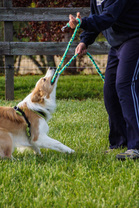 One of my favorite topics to teach dog owners is “focus and self-control” and it goes hand in hand with K9 conditioning. Slow and controlled movements in specific positions cannot be obtained if your dog is over threshold. Learning to work with a dog under threshold is a puzzle. It is a truly rewarding experience to help a handler see that their dog is able to work under threshold by making a few adjustments to their own movements, props (such as food or toys) and tone of voice. A few weeks ago while teaching a workshop and I saw a dog that was completely over threshold the minute he came into the room – not focused on the owner, completely focused on the other dogs, at the end of the leash and he wanted ACTION. The owner was being pulled here and there and was trying to get the dog’s attention. I am immediately drawn to this dog as I love a challenge. I continued to teach and watched the handler try to focus the dog without treats or toys with no success. I then went to the handler and asked if the dog liked toys or treats. The answer was “yes” – BINGO. I knew right then I could show this handler a different way to work with his dog. I had a tug in one hand and a few treats in the other. In just a few minutes I was able to get the dog to focus on me – reward alternating between treats and tugging. I got much calmer movement from the dog, a sit stay, and an offering of behavior. Now this isn’t a ‘fix all’ it was a brief moment in time and I used ONE puzzle piece and found a match. Could have easily gone the other way and then I would have had to look for a different clue fit the pieces together. A more personal example: I see many handlers (and I was one of them) trying to match their dog’s energy with their own. It is an important lesson to slow down with these dogs and teach them that life is not always full of “action”. When I got Riley at 5.5 mo old he was easily over threshold at the site of other dogs, a toy, or any sort of fun. It was a true challenge to get him to focus and have any ability to settle. I remember being in a “manners class” where I basically tugged with him the entire time to keep his focus on me….hmmm was he focused on me or focused on the tug? What I learned is that moving slow, talking quietly and a tug/release game was very effective in getting my dog to focus on me and what I was asking of him. These were the puzzle pieces I needed to make our training more effective and rewarding. I can now train almost anything with a tug in my hand, but it took work, understanding, and time to try different puzzle pieces until it all came together. Telling students to SLOW DOWN, giving commands in a soft voice, no cheerleading and reward sparingly has become a daily request of those handlers with dogs who are easily over excited. That said, I truly believe that there is a time for a super happy voice, such as when working with a softer dog that needs more encouragement. But if your dog is easily over threshold, then they do not need that type of inspiration to work and learn. In fact it can hinder the process. Whether working with my own dogs or a client dog it is truly rewarding to find those puzzle pieces that improve the training process. The examples above will not work for every dog but there are many other things to try. For some dogs food is a super high motivator, for others food will put them over threshold or the dog will not even want food if easily stressed. The same goes for a squeaky toy or a tug toy. For some these tools may work great for focus and for others it will impede or just not improve the process. There is not a one size fits all answer, that is what makes finding the puzzle pieces so rewarding. My intention in writing this blog is to just encourage those of you that have highly excitable dogs to slow down, take a look and see where the puzzle pieces fit together. This step can teach you so much about your dog and it will improve the success rate of your training as well as improve the relationship between you and your dog. 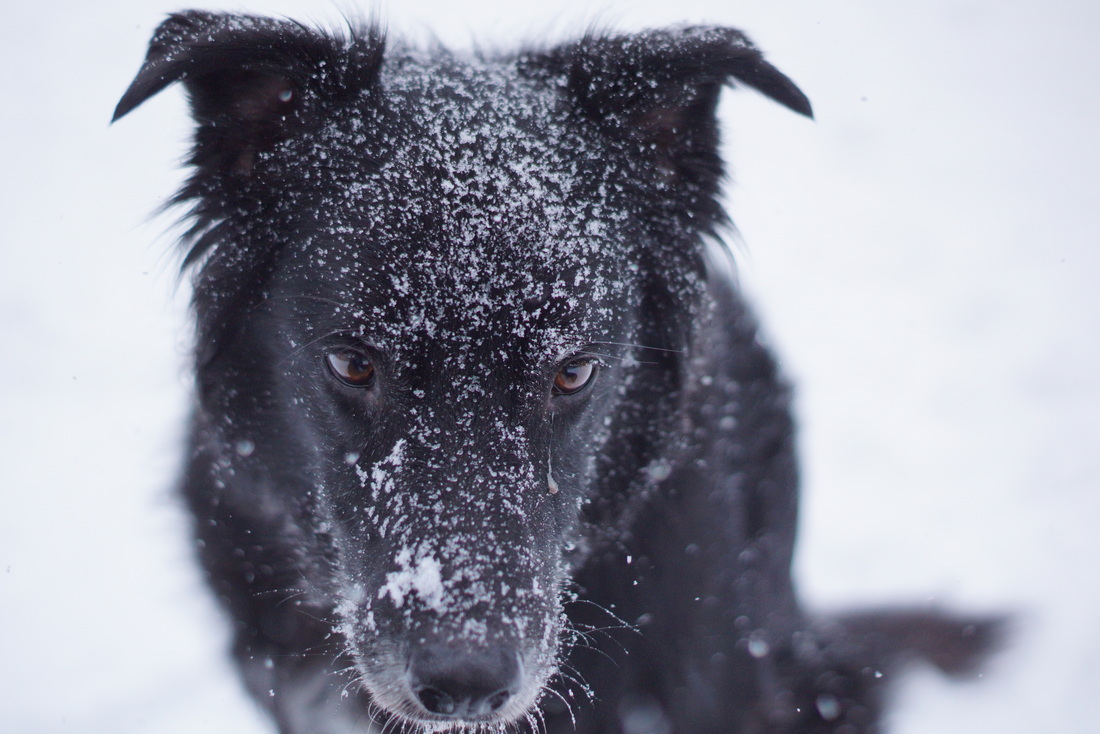 It is hard to explain the feelings that bubble up when you are told that your dog has cancer. Sad, defeated, mad, confused, broken. Stanley, my 12.5 year-old mixed breed dog has been diagnosed with cancer TWICE. HOW DOES THAT HAPPEN? I have no idea how a healthy dog, that has never had anything wrong with him, gets cancer, let alone twice. At age 9 he got thyroid cancer, we removed at that time, and it has not come back. Stanley has been GREAT – still chasing cats, squirrels and the sprinkler – his favorite past times. Last weekend I had a lump on Stanley’s side checked for the second time and it came back as a Soft Tissue Sarcoma. This type of cancer is slow growing and slow to metastasize. Yesterday we checked his blood to make sure his organs were functioning and did x-rays of his chest to make sure his lungs and heart were clear. If thyroid cancer comes back it typically comes back in lungs or heart so before we scheduled surgery we wanted to make sure all was clear. Anyway, nothing was found on the blood work or x-rays so only real choice is surgery to remove the offending lump. It is about 4” wide and fairly deep. The good news is that Stanley is very healthy – other than that cancer thing. The veterinarian told me that dogs that get regular exercise and are kept at a lean weight live 30% longer with less stress on their organs and joints. If you have a dog that is expected to live 12-14 years, that means that with healthy living and regular exercise, that same dog could live 3.6-4.2 years longer. WOW, that is awesome. Surgery is scheduled for Monday to remove the lump and Stanley is expected do well, based on his current weight, activity and over-all health. Stanley walks regularly and participates in a K9Fitness program using FitPAWS equipment and a DogTread treadmill. I intend to get my extra 3.6-4.2 years – cancer be damned!! The new K9FITbone is a very versatile piece of balance equipment. The lateral movement the K9FITbone offers encourages your dog to engage their abdominal muscles, the muscles along the spine (core and trunk muscles) as well as the supporting muscles around the hips and shoulders used for stability while supporting good posture. Here are 10 reasons that I think the K9FITbone is AWESOME: 1. Keeps knees and rear feet tracking forward. Often I see dogs that toe out while in a sitting or standing position. Some dogs have a lazy sit that developed in puppyhood, they live on slippery floors and/or lack of proper weight distribution which makes it harder for the dog to hold their rear feet and knees tracking forward. I work with the dog to maintain the correct foot/leg position that will strengthen the muscles used to hold their knees and rear feet tracking forward while also encouraging more weight distributed to the rear. The K9FITbone encourages proper foot position in both a sitting and a standing position due to the width of the bone. 2. Lateral stability The K9FITbone encourages lateral stability by strengthening supporting muscles around the shoulders and hips. Varying the inflation will make the K9FITbone rock side to side just a little or will be more dramatic by increasing inflation. The material the K9FITbone is made of has a lot of give and with it being 4” tall, it allows the dog to push into the bone to find balance thereby strengthening the major muscle groups that support the dog’s joints. Keeping the dog’s head in a more natural position will help to distribute weight more evenly. 3. Difficulty There are many levels of difficulty that can be obtained by varying the inflation and with the use of 2 K9FITbones together. With less air the K9FITbone lays flat but is squishy and can provide resistance for strengthening feet, toes, wrists, shoulders and hips. With more air the K9FITBone rocks side to side providing a lateral challenge, engaging the core and spinal muscles as well as improving stability in joints mentioned above. 4. GREAT for Puppies Because the K9FITbone encourages rear feet and knees to track forward, it does not put unnecessary stress on the joints. It encourages a flat back so that the puppy is developing muscles in the right position. You can easily shape you puppy to use the K9FITbone independently and it is low to ground so if the puppy comes off it, they just hop right back on. This makes it perfect for puppies no matter the inflation rate. 5. Shaping for strength and balance Training your dog to use the K9FITbone requires less handler support and lends to shaping independent behaviors in the proper position. If you use a clicker and love to shape behaviors, this piece of equipment is for you. As your dog gains strength, you can pair the K9FITbone with other pieces of equipment, shaping the dog to stand, down, weight shift and other movements that will strengthen their core, spinal muscles and muscles around shoulders and hips. Your dog can back up to the K9FITbone for shoulder stability work (for agility contact), it can be paired with the paw pods to work lateral stability in the shoulders for weave poles and more. 6. Target hips or shoulders with two feet on the K9FITbone If you have front feet on the long side of the K9FITbone you can target rear end strength by shifting weight to the dog’s rear legs. With rear feet on the long side of the K9FITbone you can target shoulders, biceps and triceps by shifting weight to the front legs. Position your dog’s feet on the END of the bone and you can engage more muscle groups while challenging your dog to balance laterally. 7. Fabulous for small dogs The material has enough give when under inflated to provide a challenge for smaller dogs as their feet push into the material. It also provides the lateral challenges as mentioned above when air is added. It is close to the floor so most smaller dogs are completely comfortable using it. The handler can also put the K9FITBone on a table and it won’t roll away :-) This allows the handler to stand upright and not bend over or kneel on the floor to participate in a strength program for their dog. 8. Using it with larger dogs Due to the fact that it is 23″ x 11.5″ x 4″ it makes it very difficult for a 35-45 pound dog to find a good position while supporting a flat back but it can be done. Because of the narrow shape and depending on the level of inflation it is more difficult for the dog to find balance which encourages more muscles to be engaged. If you have a larger dog, the K9FITbone can be paired with another bone, balance disc, donut, or paw pods. 9. Encourages a FLAT back Due to the elongated shape, the K9FITbone encourages a flat back when the dog positions his feet correctly. Some dogs have a harder time with maintaining a flat back but I have found that the K9FITBone helps the dog to find the correct position faster than on other equipment. Longer dog??? Use two K9FITbones end to end, perpendicular or parallel and still reap the benefits of a flat back, lateral movement, shaping independent strength training etc. 10. Versatile The K9FITbone can be paired with almost any other FitPAWS items; balance discs, paw pods, wobbles boards, rocker board, and even the peanuts and eggs. A note on size: 23″ x .11.5″ x 4″ I get “told” all the time, that the K9FITBone is “not big enough” for the 35-45 pound dog. Since using the K9FITbone I have worked with Border Collies, Australian Shephards, Brittany Spaniels, Labradors, Golden Retrievers, Long Haired Whippets, Corgis (just to name a few breeds) and other mixed breed dogs 30-50 pounds that were all able to stand with front and rear feet a natural distance apart with a flat back. This is easily shown during a private lesson. Larger dogs such as German Shepherds, Labradoodles, Great Danes, Greyhounds and the like can simply use the K9FITbone paired with another piece of FitPAWS equipment or simply use 2 K9FITbones end to end, perpendicular or parallel. I have also worked with JRTs, Papillons Poodles, Mini Schnauzers, Mini Aussies, Cavaliers, Cocker Spaniels, Shelties and others who have greatly benefitted from having a piece of equipment that is challenging but requires less handler support. Smaller dogs tend to be more spatially sensitive and this piece of equipment allows the handler to give the dog some room. Agility contact training in your living room is also a fun exercise for small dogs. Bobbie Lyons, Cert CF [email protected] New! K9FITbone for K9Fitness online class enrolls 9/9/2014 HERE |
AuthorBobbie Lyons, CCFT, KPA CPT Archives
April 2019
Categories |
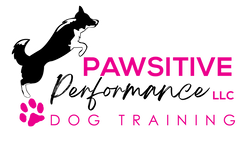
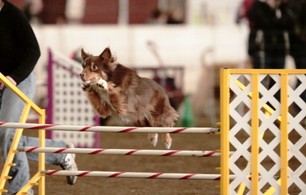
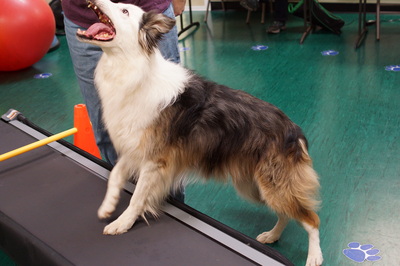
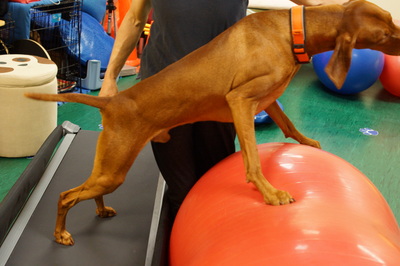
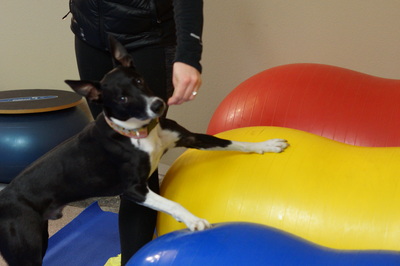
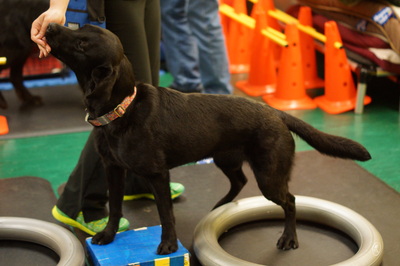
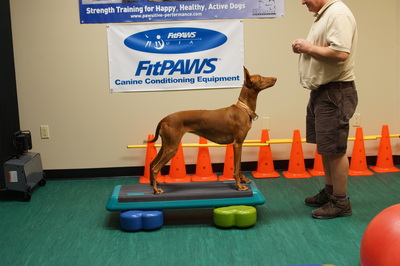
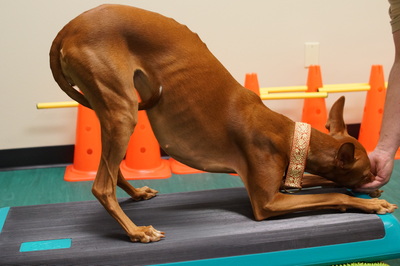
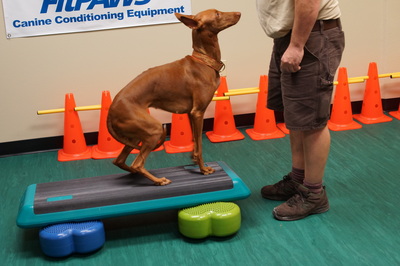
 RSS Feed
RSS Feed